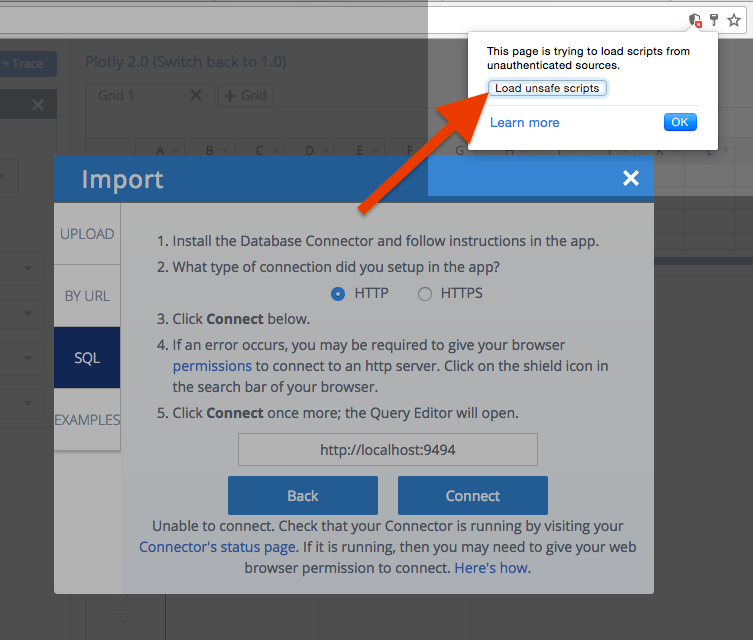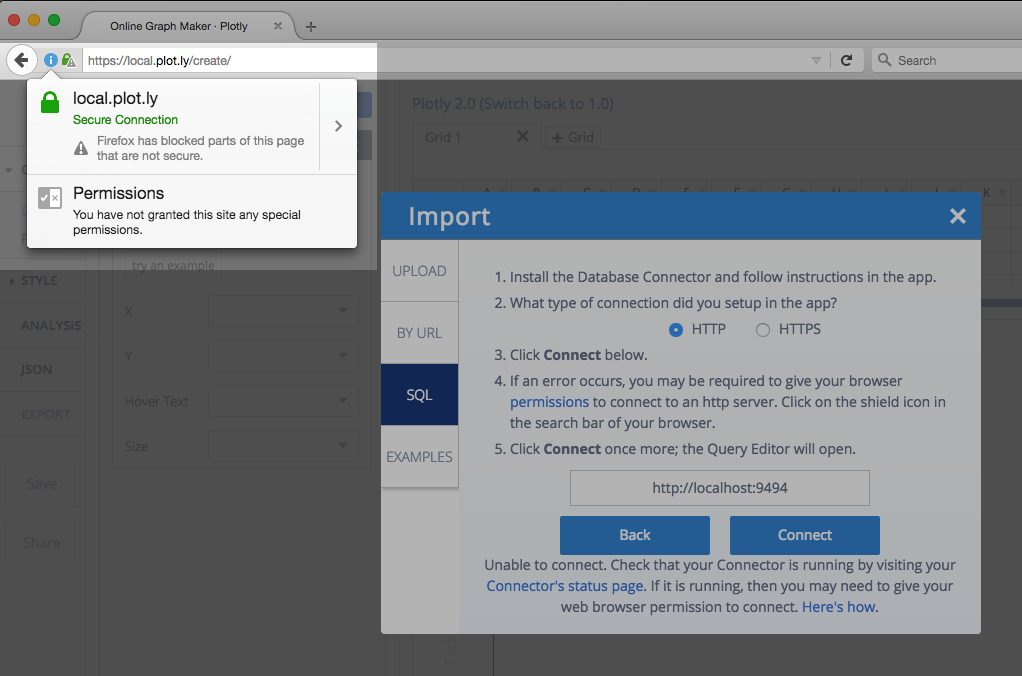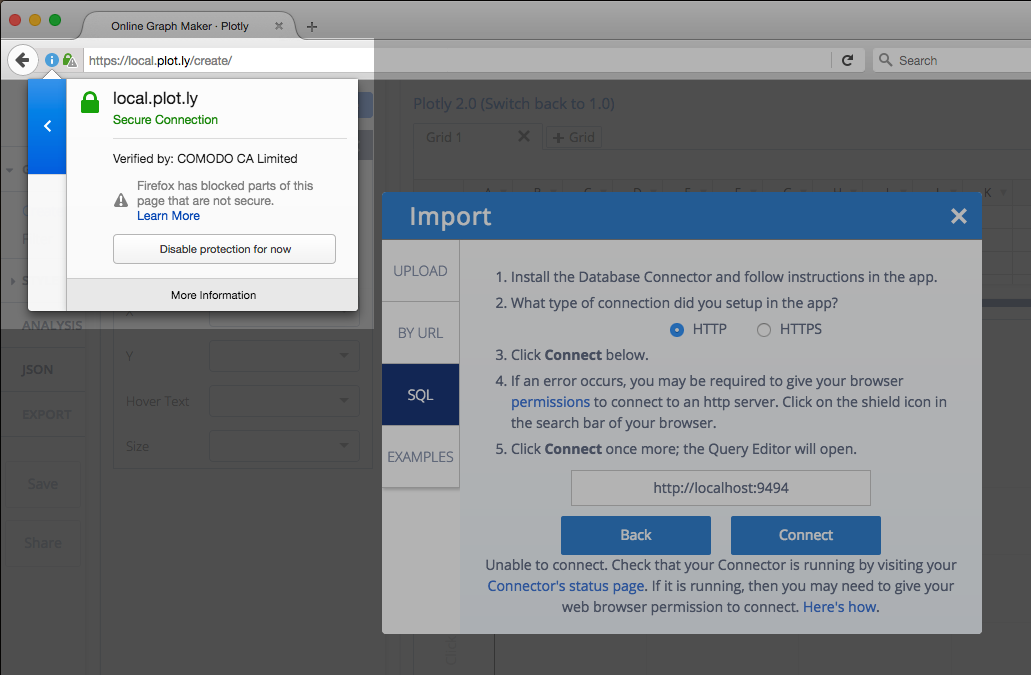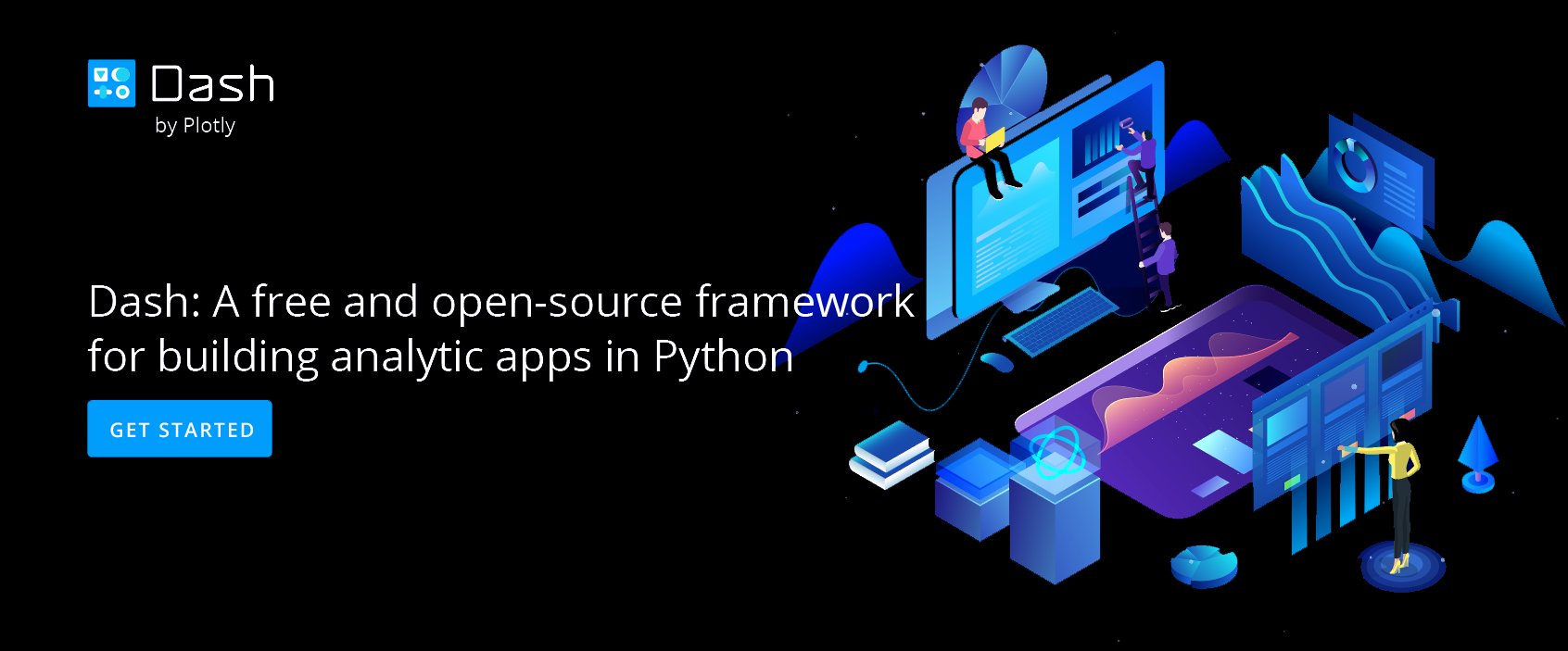
Connecting to the Plotly Connector - Tips and Troubleshooting
Connecting to the Plotly Database Connector
Architecture
The Plotly Chart Editor makes a connection to the Plotly Database Connector directly from the web browser. (The Plotly Database Connector is actually a server that runs on your localhost. It doesn’t accept connections from anywhere but your web browser).
Troubleshooting HTTP Connection Errors
By default and on Windows machines, the Plotly Database Connector will run over HTTP. Some browsers will block connections made from Plotly (a site running on HTTPS) to the Database Connector (running on HTTP). Learn more about the difference between HTTP and HTTPS.
On Mac and Linux, you can configure the connector to use a self-signed HTTPS certificate. See below for more details.
To enable HTTP connections, you may need to give your browser permission to connect. Here’s how:
Google Chrome
Google Chrome will display a Shield in the address bar.
![]()
Click on the Shield and click “Load unsafe scripts”. The page will refresh and you should be able to connect successfully.

Firefox
Firefox will display a Shield on the left of the address bar.
![]()
Click on the Shield and click the Right hand arrow.

Follow the prompt and click “Disable protection for now”. The browser will refresh and you should be able to connect.

Safari
Unfortunately, Safari blocks all cross-origin requests so it is not possible to connect to the connector from Safari without enable HTTPS.
Running with HTTPS Certificates
To get around these browser warnings, the connector needs to run on HTTPS.
You can run your Connector over HTTPS by using a self-signed HTTPS certificate. The Plotly Connector will generate these certificates for you, here is how to get started with up self-signed HTTPS certificates on Mac and Linux system. This is not available for Windows right now.
We are currently working on providing HTTPS certificates automatically for all of our users with the open source Let’s Encrypt service. It should be available in February or March of 2017.

